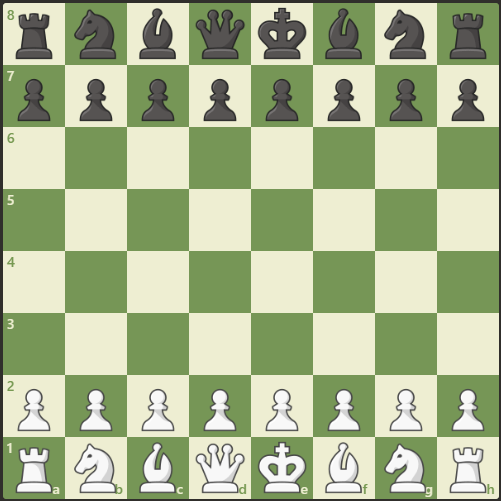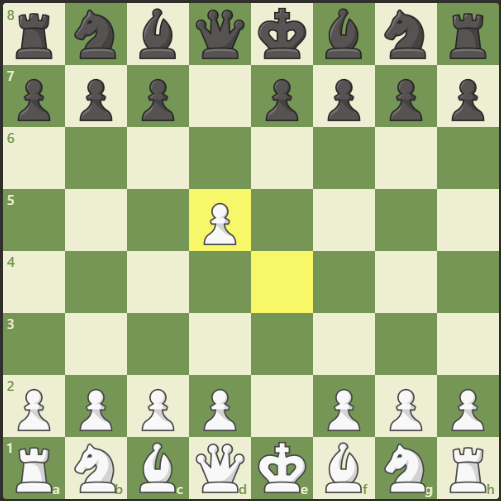Introduction
Chess is a classic strategy game that has been played for centuries. It’s a game of skill, tactics, and patience, where two players compete to checkmate their opponent’s king. Whether you’re new to the game or want to brush up on your skills, this guide will help you get started.
1. Understanding the Chessboard and Pieces
The chessboard consists of 64 squares, arranged in an 8×8 grid. The squares alternate in color, typically light and dark.
Chess Pieces
Each player starts with 16 pieces:
- 1 King: Moves one square in any direction.
- 1 Queen: Moves any number of squares in any direction.
- 2 Rooks: Move any number of squares horizontally or vertically.
- 2 Bishops: Move any number of squares diagonally.
- 2 Knights: Move in an “L” shape: two squares in one direction and one square perpendicular.
- 8 Pawns: Move forward one square but capture diagonally. On their first move, they can move forward two squares.
2. Setting Up the Board
1. Positioning the Board
- Orientation: Place the board so that each player has a light-colored square on their right-hand corner. This is crucial because it ensures the correct placement of pieces.
2. Setting Up the Back Rank (First Row)
- Rooks: Place the rooks in the corners of the board. Each player has two rooks. For White, they go on a1 and h1; for Black, on a8 and h8.
- Knights: Next to each rook, place the knights. For White, this means placing them on b1 and g1; for Black, on b8 and g8.
- Bishops: Next to each knight, place the bishops. For White, they go on c1 and f1; for Black, on c8 and f8.
- Queen: The queen is placed on her own color square. For White, the queen goes on d1 (a light square); for Black, it goes on d8 (a dark square).
- King: The king is placed on the remaining square next to the queen. For White, this means placing the king on e1; for Black, on e8.
The setup for the back rank should look like this:
- White’s Back Rank:
- a1: Rook | b1: Knight | c1: Bishop | d1: Queen | e1: King | f1: Bishop | g1: Knight | h1: Rook
- Black’s Back Rank:
- a8: Rook | b8: Knight | c8: Bishop | d8: Queen | e8: King | f8: Bishop | g8: Knight | h8: Rook
3. Setting Up the Front Rank (Second Row)
- Pawns: Each player has 8 pawns, which are placed on the row directly in front of the back rank. For White, this means placing all 8 pawns on row 2 (a2 to h2); for Black, on row 7 (a7 to h7).
The setup for the front rank should look like this:
- White’s Pawns:
- a2: Pawn | b2: Pawn | c2: Pawn | d2: Pawn | e2: Pawn | f2: Pawn | g2: Pawn | h2: Pawn
- Black’s Pawns:
- a7: Pawn | b7: Pawn | c7: Pawn | d7: Pawn | e7: Pawn | f7: Pawn | g7: Pawn | h7: Pawn
While it’s useful to know opening principles and strategies, being flexible and responsive to your opponent’s moves is equally important. Avoid memorizing moves without understanding their purpose; instead, aim to grasp the reasoning behind each step.
Common Openings for Beginners
- The Italian Game (1. e4 e5 2. Nf3 Nc6 3. Bc4): A simple yet powerful way to develop pieces and prepare for quick attacks.
- The Ruy López (1. e4 e5 2. Nf3 Nc6 3. Bb5): A classical opening that pressures Black’s center and promotes solid development.
- The Queen’s Gambit (1. d4 d5 2. c4): An effective way for White to control the center and initiate pawn exchanges to open up space.
These initial moves provide a solid base, but as you gain experience, you’ll discover various openings that suit different styles of play, from aggressive to defensive.





5. Final Checks
Before starting the game, ensure that:
The pieces are correctly placed as described.
Each player’s pieces are on their respective first two rows.
The board is oriented correctly with a light square on the right corner.
Once the board is set up correctly, you’re ready to start the game of chess! This preparation is essential, as it ensures that both players begin on equal footing with all pieces in their designated positions.
3. Basic Rules of Movement
Each type of piece has its own unique movement rules (as described above).
Players take turns making one move at a time, with White always moving first.
If you land on a square occupied by an opponent’s piece, you capture that piece and remove it from the board.
4. Objective of the Game
The goal of chess is to checkmate your opponent’s king, meaning the king is in a position to be captured (in “check”) and cannot escape from capture on the next move.
5. Special Moves
Castling: A unique move involving the king and a rook. It allows you to move the king two squares toward a rook and then move that rook to the square next to the king. Conditions for castling:
Neither piece has moved previously.
There are no pieces between them.
The king is not in check, does not move through check, and does not end up in check.
En passant: A special pawn capture that can occur when a pawn moves two squares forward from its starting position, landing beside an opponent’s pawn. The opponent can capture the moving pawn as if it had only moved one square.
Promotion: When a pawn reaches the opposite end of the board, it can be promoted to any piece (except a king), usually a queen.
6. Basic Strategies for Beginners
Control the Center: Try to control the center of the board with your pieces. This allows for greater mobility and influence over the game.
Develop Your Pieces: Move your pieces out from their starting positions. Get your knights and bishops into play early.
Protect Your King: Consider castling early to safeguard your king behind a wall of pawns.
Watch Your Opponent’s Moves: Always be aware of your opponent’s threats. Try to anticipate their strategy.
7. How to End the Game
Check: When your opponent’s king is under threat of capture.
Checkmate: When the king is in check and cannot escape.
Stalemate: A draw occurs when a player has no legal moves and their king is not in check.
Resignation: A player may concede defeat at any time.
8. Practice and Improvement
The best way to get better at chess is to play regularly. Here are some ways to practice:
Play against friends or family.
Use online platforms to play against opponents of various skill levels.
Study basic openings, tactics, and endgames.
Analyze your games to learn from mistakes.
Conclusion
Chess is a rich and rewarding game that can provide endless enjoyment and challenge. With practice and dedication, you’ll improve your skills and develop your own strategies. Remember, every grandmaster was once a beginner! So, set up the board, invite a friend, and enjoy the timeless game of chess.


